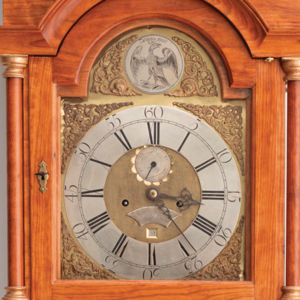Building a Secretaire-Bookcase
Lots to learn from this 18th-century case study
Synopsis: Rather than follow a strict how-to-do-it formula, Victor J. Taylor presents here an 18th-century secretaire-bookcase as a tour of period construction practices, with side trips into alternatives for the present-day craftsman. The piece is composed of five sections: the plinth, the cupboard, the secretaire, the bookcase, and the cornice. Taylor combined the bookcase and cornice as one unit. The article contains page after page of detailed project plans, accompanied by building instructions. Numbers on the drawings and explanations correspond to the bill of materials, also included. Where it was difficult to see joints, Taylor followed orthodox cabinetmaking practice, often using dowels.
From Fine Woodworking #38
It’s not often that you come across a piece of English antique furniture that can be dated precisely, but glued to one of the drawer linings of this handsome secretaire-bookcase is the following receipt: “B. Milward [the purchaser]. Jan 25. 1787. Bought of Mr. Evans, Broadmead, Bristol. Price £15.15.”
Today the piece stands in the Withdrawing Room of the Georgian House, Bristol, which is a real treasure store of late 18th-century household goods ranging from fine furniture and priceless paintings down to kitchen utensils. It is officially described as Hepplewhite style, but it seems to me that the date is too early for Hepplewhite, and that the piece is more likely late Adam. In drawing this complex piece, I was struck by how instructive it can be of various features common to much simpler furniture. Rather than follow a strict (and probably oppressive) how-to-do-it formula, I have attempted to present the piece as a tour of period construction practices, with side-trips into alternatives for the present-day craftsman.
As can be seen in the drawing on this page, the piece is composed of five sections: from the floor upwards these are the plinth, the cupboard (containing cutlery and linen drawers, and two butler’s trays), the secretaire, the bookcase and the cornice. These sections were usually made as complete, separate units, then fitted together, although in this piece the bookcase and cornice are combined as one unit.
Often the sections merely rested on each other so that they could easily be dismantled if they had to be moved—indeed, quite often the main cupboard section had handles fitted to it to make lifting easier. Usually the weight of each section kept it in place, with various sorts of blocks and keys serving to keep things from shifting.
Mahogany is used for all show-wood parts, with oak and pine for the hidden parts and groundwork, normal practice for the time. The mahogany is almost certainly Cuban, and the superb “Spanish Feather” veneer is virtually unobtainable these days. All veneer is laid on without benefit of counterveneer, which would be risky with today’s central heating.
For the full article, download the PDF below:
Fine Woodworking Recommended Products

Starrett 12-in. combination square

Bessey EKH Trigger Clamps

Jorgensen 6 inch Bar Clamp Set, 4 Pack






















Log in or create an account to post a comment.
Sign up Log in